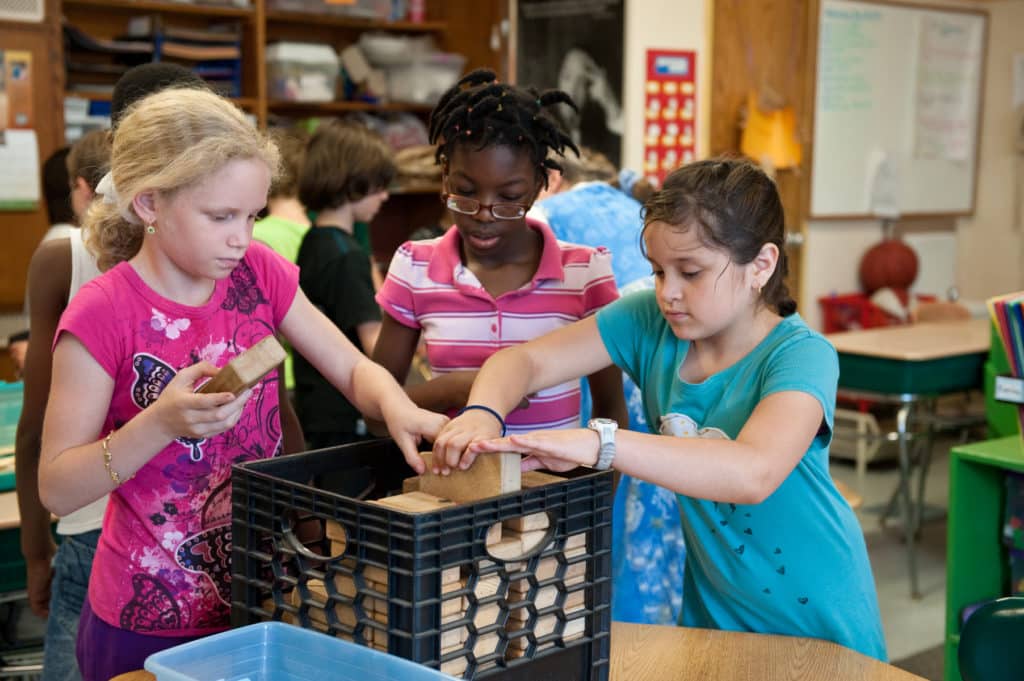
Knowing the students in your class happens in different ways for different teachers. A middle school teacher who sees 150 adolescents for one subject, 45 minutes a day will likely develop different kinds of relationships with their students than a first grade teacher who has one class of 22 six- and seven-year-olds.
What is likely the same is that each teacher has a unique understanding of (and rapport with) each class—be it from year to year, or block to block. The individual interests, ages, quirks, abilities, and challenges in the room help to create a whole-class personality. That personality will shift as the students who contribute to it grow and change, both individually and as a group. With just a list of birthdays and a copy of Chip Wood’s Yardsticks, teachers can plan for and respond to these changes.
Though every student develops at their own pace, with multiple factors affecting their internal clock, individuals in each class likely fall into a two- to three-year age range. Within this range, there are predictable stages of development, each of which has its own characteristics. For example, when children are developmentally six, they need lots of space to move around. But children who are developmentally seven often prefer working alone in a contained space.
Knowing the dominant chronological age of the students in your class enables you to make savvy predictions about their developmental needs throughout the year and plan accordingly. The Birthday Cluster Exercise is a quick and easy way to organize your class list chronologically, compare those ages with developmental stages, and then consider whether adjustments in your planning, approach, or even classroom space and organization could be helpful to individual students and the class as a whole.
When fourth grade teacher Mrs. N. looks at her roster at the beginning of the school year, she notes that birthdays cluster in summer months, so students in her class will be on the young side, with many of them still showing developmentally eight-year-old behavioral characteristics. The remaining birthdays are evenly scattered through the spring, winter, and fall. In six months, the majority of the class will be solidly nine with a few students beginning to show ten-year-old characteristics.
Mrs. N. consults the chapters about eight- and nine-year-olds in Yardsticks. She learns that most children who are developmentally eight like to talk, work cooperatively, are full of physical energy, are industrious but work quickly, and have a limited attention span. Developmental nine-year-olds tend to be more competitive. Although they are usually more coordinated than eight-year-olds, they often fatigue easily and complain about injuries, both real and imagined. They like to work with partners that they choose and might begin forming exclusive groups. They can be impatient, anxious, and easily discouraged. They generally don’t like to take risks and they don’t like to be wrong.
Mrs. N. sees implications for how she’ll schedule activities, arrange learning groups, and prepare the students for the standardized testing that they’ll face in the spring. At the beginning of the year, she’ll provide lots of short breaks so her students can burn off their physical energy. However, she’ll need to closely monitor these breaks to ensure that students don’t push beyond their limits. She’ll also begin the year by planning numerous small group projects. She’ll change the composition of the groups frequently so that students learn to work with everyone, but she knows that before long the students will start to complain about working in groups that she’s formed, preferring to work with a partner of their choice, often a same-gender partner. She’ll need to think about how to avoid gender splits and clique formation.
Mrs. N. will also think about preparing students for their spring test-taking. Because of their tendencies towards impatience, anxiety, and discouragement, nine-year-olds often worry excessively about standardized tests. Mrs. N. would like her students to score well on the tests but more importantly she wants them to feel OK about themselves no matter how they score. So, throughout the year she’ll give them lots of opportunities to learn and practice age-appropriate test-taking strategies. She’ll model productive test-taking behavior and have students role-play. And she’ll be sure to give the students lots of encouragement before, during, and after the testing.